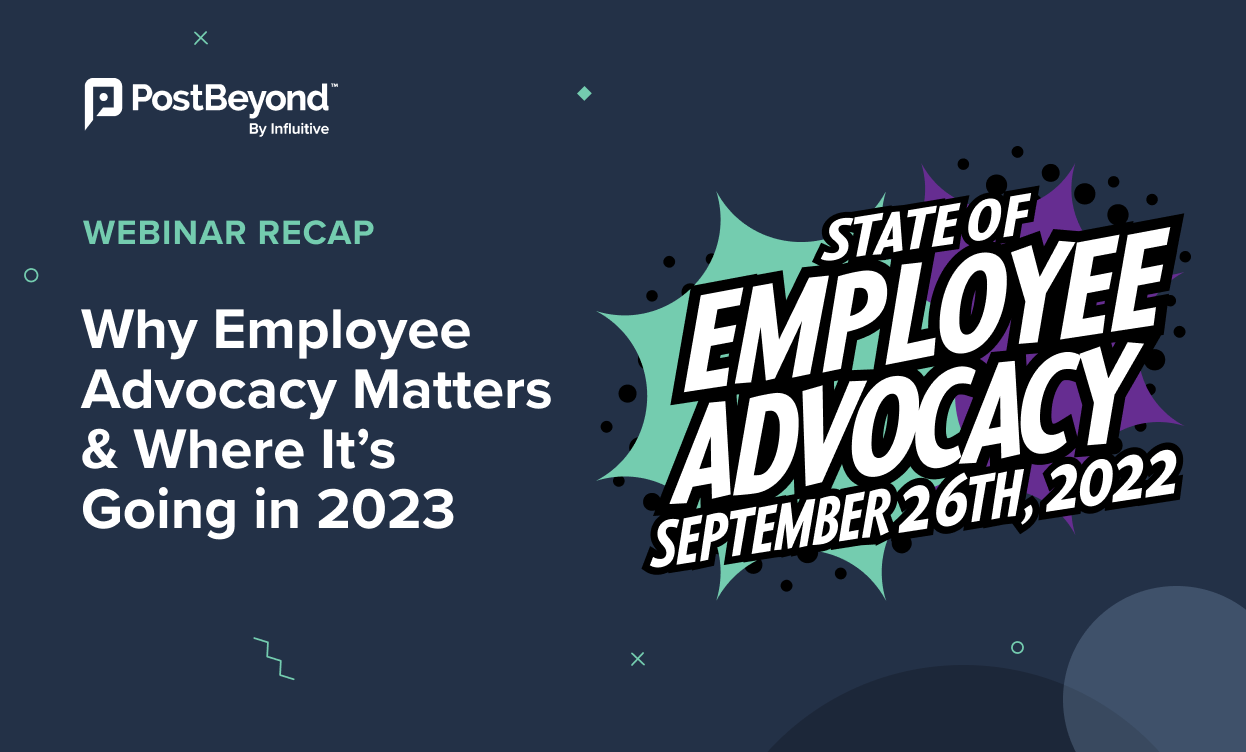We brought in six stellar social media rockstars to hash out why employee advocacy matters and where it’s going for the rest of 2022 and into 2023.
The all-star panel touched on a wide range of things: Learning how posting on LinkedIn gives you an edge in your career. Knowing how to drive ROI from social media. Building employee advocacy culture in your company. This was just the tip of the iceberg.
But when you bring in this many experts together, and then ask them to talk about what they know from real world success, you get an overflow of incredible, actionable insights.
There was no way for us to recap everything in just one blog post. So, you’ll want to catch up on the full recording here. But for anyone doing employee advocacy on social media – or scaling and improving their program – we cut a few gems you might like.
“Has Posting More on LinkedIn Helped Your Career?”
Okay, when you assemble six great social media experts, you have to ask this question, right?
Obviously, we need to know as career-driven marketers if this is worth it, absolutely. But we’re also drivers of employee advocacy in our organizations. What can we tell our colleagues about this stuff that’ll convince them to put on their brand advocacy capes?
Well, here’s what each of our panelists said:
Unrestricted Networking

Kerry-Ann Betton Stimpson, CMO at JMMB Group Jamaica and founder and host of the Internal Marketing Podcast, said she used LinkedIn to learn, connect, and build relationships. Overall, social gave her a vehicle to drive more reach, grow her networks, and develop her expertise.
Danielle Guzman, Global Head of Social Media at Mercer, said she never actually used social media before 2016. But since starting LinkedIn, Danielle saw that it was a great tool to network at scale to connect with and meet anyone, anywhere. There are no geographical boundaries and, more importantly, no real sense of hierarchy. In real world events, it can be hard to get in front of, say, C-Suite people, but there’s no such barrier on social.
Potent Talent Acquisition
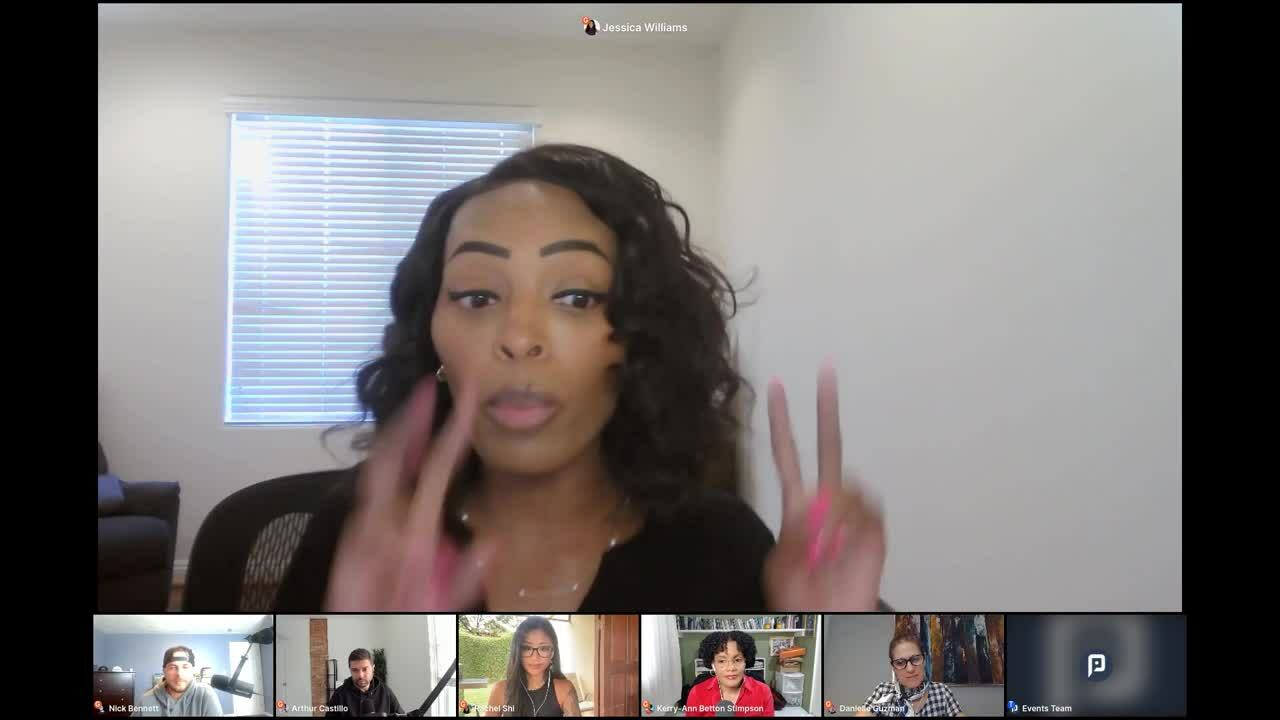
Jessica Williams, VP of People at Refine Labs, spoke about how the people who joined Refine Labs were drawn by the LinkedIn activities of the company’s leadership. Jessica was getting people who had bought into the company’s culture through the company’s social presence (via its leaders and employees).
Arthur Castillo, Head of Dark Social and Evangelism on Chili Piper, doubled down on Jessica’s points. Arthur found that being active on LinkedIn would attract his ideal candidates.
Pipeline Growth
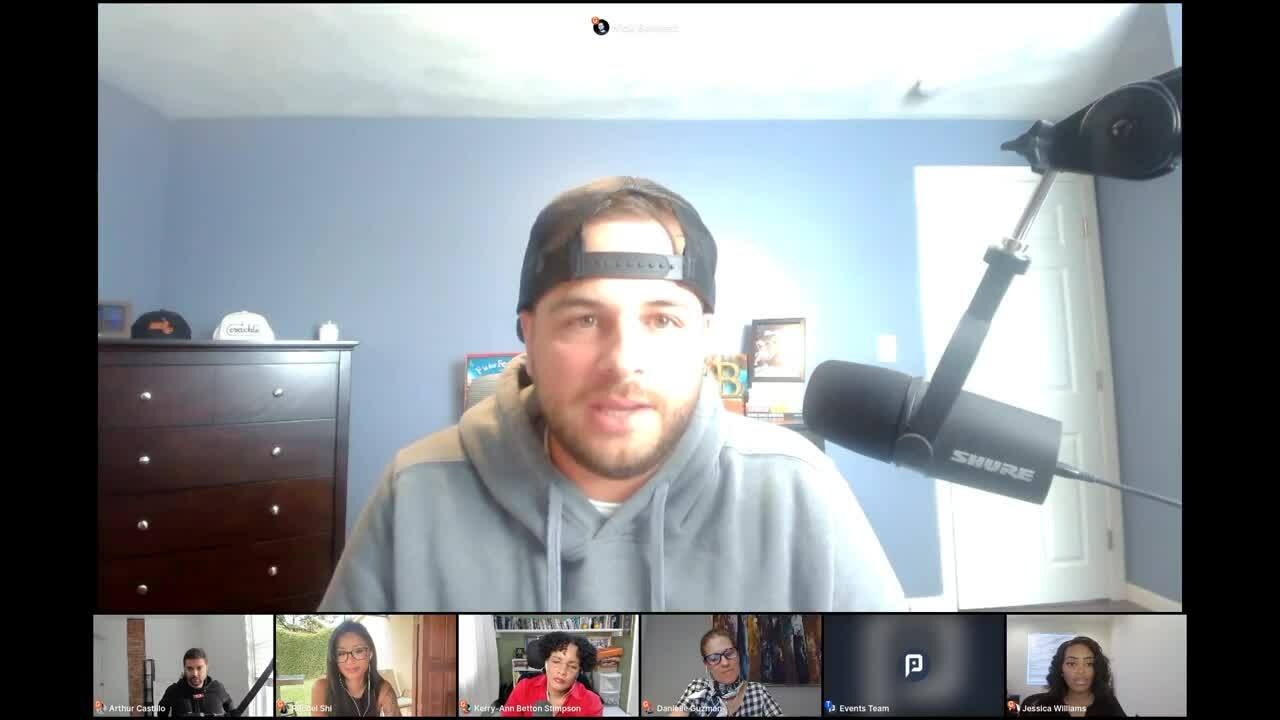
Nick Bennett, Director of Evangelism and Customer Marketing at Alyce, laid out that it takes a deliberate strategy to thrive on social. But when he implemented that strategy, he found that he can drive a million dollars in pipeline (check the webinar at 17:53 to see how).
Rachel Shi, Strategic Account Executive at Metadata, said that she used social media to build her credibility. Rachel shared insights, engaged in conversations, and tagged people to others so that her peers get the right help or answers. In the course of it all, Rachel rose as a thought leader and expert. Rachel’s prospects see her as a problem-solver, not a sales rep.
Overall, being active on LinkedIn (and social in general) definitely pays off. But it takes effort.
You have to carve your niche and dig deep into it so that people recognize you for knowledge. And with time, patience, and persistence, you can emerge as a subject matter expert (SME) or thought leader. When you drive visibility towards yourself on that basis, your presence grows.
“What Content Best Resonates With Your Audiences?”

Next, we asked the panel what content saw the most success with their LinkedIn audiences.
The answer? Your authenticity.
As Nick put it, what matters to people isn’t what you do from 9-5, but who you are from 5-9.
People are more interested in knowing “you” the person, not the role. Interestingly, the strongest employees on social want to be authentic. If they can’t be who they truly are on LinkedIn, then, in all likelihood, they won’t be interested in your employee advocacy program.
Moreover, if your advocates aren’t authentic, they won’t be able to drive your thought leadership content, talent sourcing needs, and other business goals.
Jessica reiterated this point. She explained that her audiences loved to read about what she did in terms of an action, why she did it, and how she did it. This is critical to understand. Audiences want both a captivating story and actionable insights they can do themselves if they so choose.
Danielle said that her audiences resonated with culture content. But the reason why was really because people could connect to that content. It created meaningful conversations and, when it clicks with them personally, they’ll want to drive a discussion of their own.
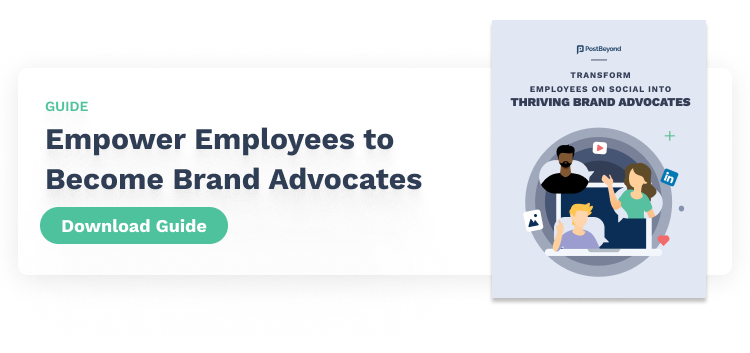
This is a critical point for employee advocacy program admins. You don’t want your advocates to just copy-paste corporate messaging. That would come off as inauthentic. Rather, you want your advocates to really speak from their minds and in their voices.
So, in terms of content, you’ll want to provide assets that your advocates can personally speak to. This can include blogs related to their work, or personal areas of interest. Likewise, you can also encourage them to create their own content, i.e., employee-generated content (EGC).
Does Posting on Social Media Impact ROI?
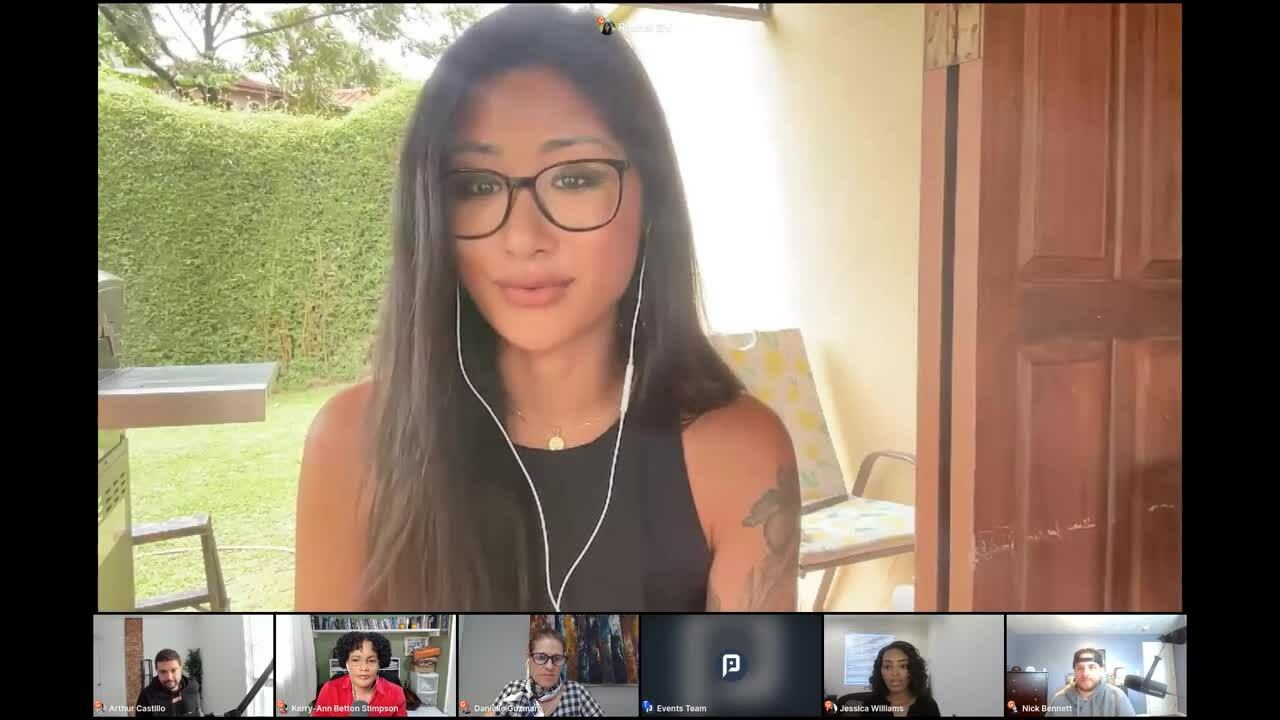
Yes!
As Rachel put it, “In 2022, this shouldn’t even be a question as your target audience is mostly on social media.”
However, Rachel also said there was a caveat. You need to engage on social the right way. It’s all about the credibility you build. You don’t want to be known as someone who posts useless or spammy content, for example.
Arthur reiterated this point. Social media can be a “double-edged sword” and can be a way to both build or burn bridges. This is why employee advocacy admins have to really think about how to drive fun, creativity and authenticity, but in a way that ensures employees engage in a way that helps both them and the brand.
Danielle discussed how her employee advocacy program (which has 38K advocates and is the #1 driver of ROI for her company on social) helps strike this balance.
For example, Danielle has a one-page guideline or social media policy that sets fundamental rules about respecting and not disparaging others. But overall, the policy provides a lot of room for employees to be themselves.
Nick is driving $1M in pipleline on LinkedIn, and at $0 direct cost. So, for him, it doesn’t make sense to not be active on social. However, you (and your advocates) have to carve their niche and establish their credibility in that area. Succeeding requires a strategy that centers on good content and, as importantly, consistent activity on social.
(Learn how a PostBeyond customer drove an ROI of 202% by using our platform to scale their employee advocacy program).
Looking at it from another standpoint, both Jessica and Arthur said that being active on LinkedIn also helped them attract their ideal talent candidates. Moreover, leadership activity on social is a major driver for attracting strong job applicants.
Interestingly, Jessica brought up how strong executive social media activity attracts applicants who are also strong in social. When they join Metadata, they basically reinforce or expand the company’s footprint on LinkedIn and other platforms.
We’d add as you attract young people to your brand through social, you could also start driving a presence in newer platforms (e.g., TikTok, Snapchat, etc) through your younger new hires.
“What Does an Internal ‘Culture of Advocacy’ Look Like?”

Kerry-Ann told us that great workplaces empower the voices of their employees. They make their employees feel like they can achieve their goals, be it at the company, their careers in a general sense, or even in their personal lives.
It is that sense of ‘fulfillment’ that drives employee buy-in and engagement. They channel that energy ‘outward’ on social towards your prospects, customers, and potential hires. Audiences will see that energy and enthusiasm, which will help attract them to your brand.
Danielle emphasized you need strong internal alignment. You want your employee advocates to form organic relationships with each other and their networks. To build those relationships, your employees need to be authentic; it’s hard to do that if they can’t be themselves.
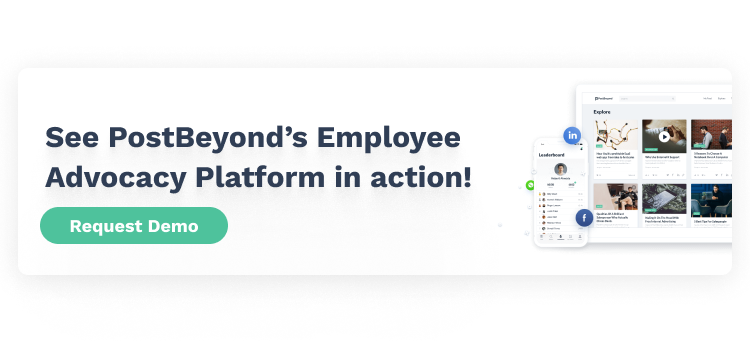
That said, you do have to strike a balance, especially in regulated or compliance-heavy sectors – like finance. Danielle outlined how an organized employee advocacy program helped manage those issues while still driving Mercer’s social media goals.
Finally, you can’t ignore leadership. As Jessica put it, “When you think of Refine Labs, you think of Chris or Meghan.” Your executives must be active on social. They set the tone for the rest of the company and drive lots of positive results, like building ties with their peers (i.e., executives and other leaders), amplifying your brand reach, etc.
“How Do Employees Get Past the Fear of Social Media?”

Getting employees to be more active on social isn’t easy. You might have people who are shy on social media, or nervous about people responding negatively to their posts. Others may be afraid of failing to get any engagement at all.
One thing our panel emphasized was that fear is natural. Better yet, fear is a sign of real growth because it means you’re stepping into the unknown. But our entire panel agreed: there’s always good at the other end.
Rachel said your employees will absolutely get negative responses – it’s part and parcel of the social media world. You just have to move on and keep posting.
Danielle emphasized the need to build relationships with people in your networks. This is why being authentic and true to yourself is key. If people connect with you and know who you are as a person, they’ll be more likely to engage with your posts.
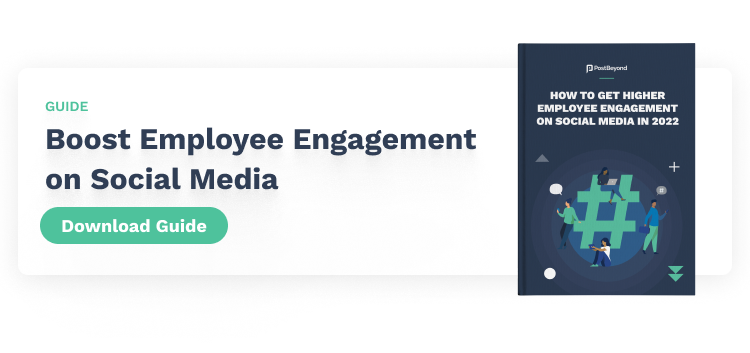
Arthur spoke about “finding your tribe.” Basically, find the people you can relate to and engage with in terms of your professional and personal interests. So, join conversations, comment on your contacts’ posts, tag people to posts with questions, provide thoughtful input, etc.
When you do this consistently enough, you’ll find that the people you engaged with will actually reciprocate and engage with your posts.
When building an employee advocacy program, you can try incorporating this knowledge of social media into your strategy. This can include playbooks on how to use LinkedIn, Twitter, Facebook and other platforms. You could also bring in really successful LinkedIn and other influencers to coach or train your employees on social media.
“Where’s Employee Advocacy Going?”

Finally, we asked the panel where they saw employee advocacy was heading for the rest of 2022 and into 2023. One word we kept hearing was “communities.”
Your employees and their audiences aren’t just networks, but communities. People all know each other and there’s some level of camaraderie, bonding, and shared interests.
The stuff that resonates the most in these communities doesn’t mention brands, but solves problems, provides help, and delivers stories. So, when managing employee advocacy, you’ll have to think about the community, i.e., your employees and customers.
Customers will drive more of your brand advocacy. Arthur brought up an excellent point about how professionals ask each other for help, recommended tools, and other tips. You want your customer to be in that conversation and to bring you up as a solution.
Brands have to figure out how they can build that level of trust and connectivity with their customers. How do you drive acts of advocacy from your customers? Well, your employees could play a big role in that by participating in communities.
